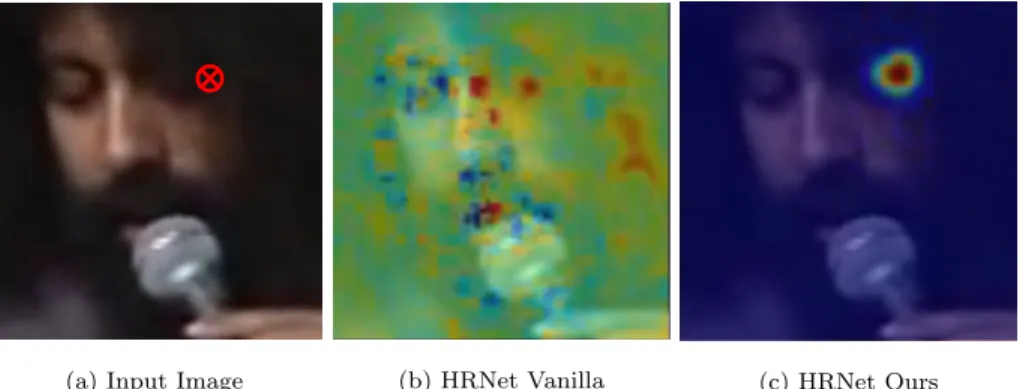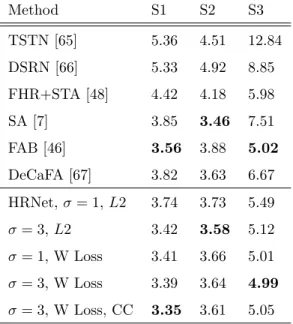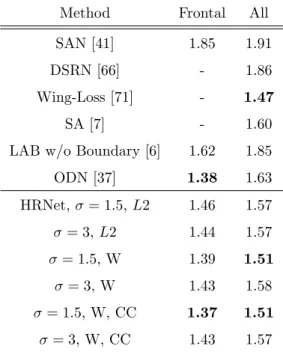2D Wasserstein Loss for Robust Facial Landmark Detection
Texte intégral
Figure


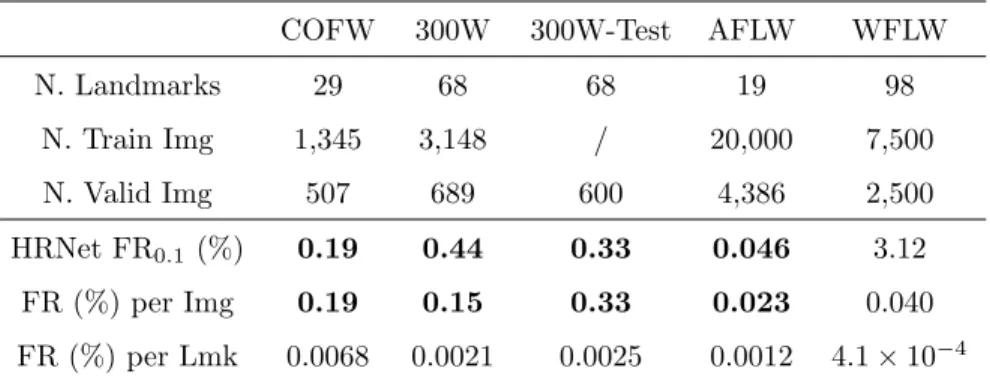
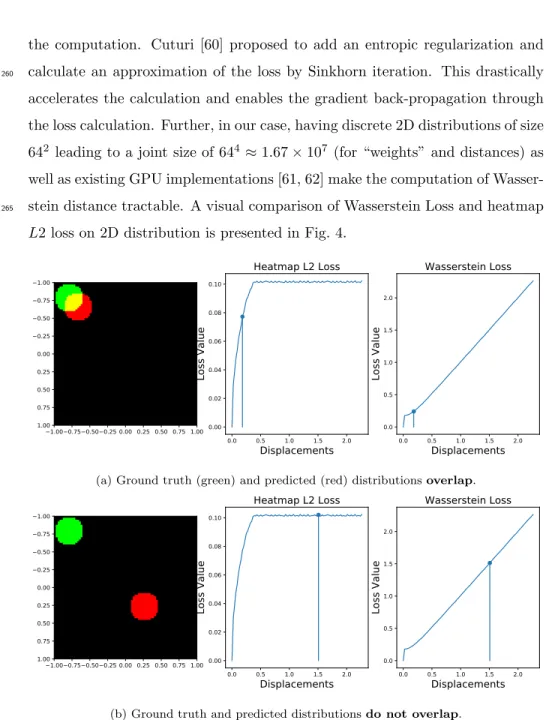
Documents relatifs
In the result, the algorithm achieved 97.6% of spinal anomaly estimation accuracy even with 50 points of candidates given per landmark, as well as 96.2% of accuracy in
With the proposed framework high recognition accuracy, reduction in feature vector dimensionality and reduction in computational time for feature extraction is achieved by
from the 6-carbon of the glucose molecule greatly exceeded that obtained under anaerobic conditions; (2) incubation of worms in the presence of pyruvate radioactively labelled in
Anti Spoofing Face Detection Technique based on Transfer Learning Convolutional Neural Networks and Real-Time Facial Landmark Detection*... Anti Spoofing Face Detection Technique
Given an unknown speech signal, the presence of a desired speech unit is esti- mated by searching for each time frame the corresponding segment, that provides the maximum
We also suspect that the landmark structures are not defined well enough when using small training image datasets (69 images for DROSO, 50 for CEPHA and 57 for ZEBRA), thus making
Les codes ont ensuite été divisés en trois niveaux selon la théorie des systèmes écologiques (Bronfenbrenner, 1977), qui distingue plusieurs systèmes
Design of Vehicle Propulsion Systems (VPSs) is confronted with high complexities due to powertrain technology (conventional, battery-electric, or hybrid-electric vehicles),

